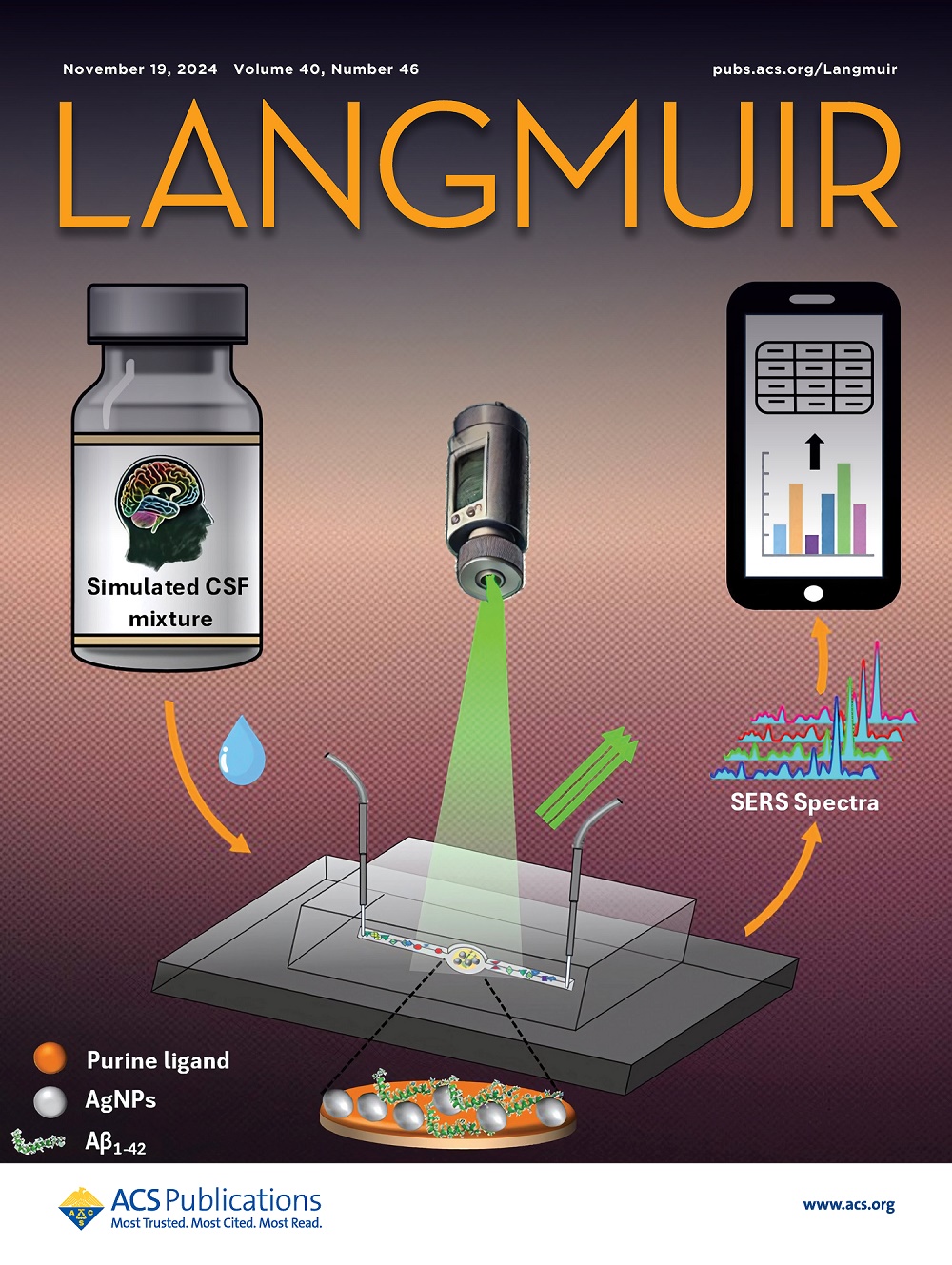A Hydrophobic Goldilocks Zone for Cyclodextrin-Lipid-Membrane Interactions: Implications of Drug Hydrophobicity on Kinetics of Cholesterol Removal from Lipid Membranes
IF 3.7
2区 化学
Q2 CHEMISTRY, MULTIDISCIPLINARY
引用次数: 0
Abstract
Cyclodextrins (CDs) are cyclic oligosaccharides known for their ability to form guest–host complexes with hydrophobic molecules such as cholesterol, making them useful in various biomedical and industrial applications. However, their nonselective cholesterol extraction from cellular membranes raises concerns about cytotoxicity, necessitating a deeper understanding of their interactions with lipid bilayers. In this study, we investigate the role of CD hydrophobicity, as modulated by various substituent chemistries, on cholesterol extraction from supported lipid bilayers (SLBs) using quartz crystal microgravimetry with dissipation monitoring (QCM-D). Our results reveal a hydrophobicity-dependent “Goldilocks Zone” where intermediate hydrophobicity optimizes cholesterol removal while preserving membrane integrity. Additionally, preliminary analyses suggest that CD-membrane binding cooperativity, influenced by hydrophobicity, plays a crucial role in the efficiency and selectivity of cholesterol extraction. CDs with intermediate hydrophobicity exhibit enhanced binding cooperativity and more efficient cholesterol removal, suggesting a synergistic relationship between hydrophobicity and binding dynamics. These findings highlight the importance of CD hydrophobicity and binding cooperativity in designing cyclodextrin-based therapeutics with minimal cytotoxicity.

环糊精-脂质-膜相互作用的疏水金发带:药物疏水性对脂质膜去除胆固醇动力学的影响
环糊精(cd)是一种环状低聚糖,以其与疏水分子(如胆固醇)形成客-主复合物的能力而闻名,使其在各种生物医学和工业应用中非常有用。然而,它们从细胞膜中非选择性地提取胆固醇引起了对细胞毒性的关注,需要更深入地了解它们与脂质双分子层的相互作用。在这项研究中,我们利用石英晶体微重力耗散监测(QCM-D)技术研究了不同取代基化学物质调节的CD疏水性对从负载脂质双层(slb)中提取胆固醇的作用。我们的研究结果揭示了一个依赖于疏水性的“金发姑娘区”,其中中间疏水性优化了胆固醇的去除,同时保持了膜的完整性。此外,初步分析表明,受疏水性影响的cd -膜结合协同性对胆固醇提取的效率和选择性起着至关重要的作用。具有中间疏水性的CDs表现出增强的结合协同性和更有效的胆固醇去除,表明疏水性和结合动力学之间存在协同关系。这些发现强调了CD疏水性和结合协同性在设计具有最小细胞毒性的环糊精为基础的治疗方法中的重要性。
本文章由计算机程序翻译,如有差异,请以英文原文为准。
求助全文
约1分钟内获得全文
求助全文
来源期刊

Langmuir
化学-材料科学:综合
CiteScore
6.50
自引率
10.30%
发文量
1464
审稿时长
2.1 months
期刊介绍:
Langmuir is an interdisciplinary journal publishing articles in the following subject categories:
Colloids: surfactants and self-assembly, dispersions, emulsions, foams
Interfaces: adsorption, reactions, films, forces
Biological Interfaces: biocolloids, biomolecular and biomimetic materials
Materials: nano- and mesostructured materials, polymers, gels, liquid crystals
Electrochemistry: interfacial charge transfer, charge transport, electrocatalysis, electrokinetic phenomena, bioelectrochemistry
Devices and Applications: sensors, fluidics, patterning, catalysis, photonic crystals
However, when high-impact, original work is submitted that does not fit within the above categories, decisions to accept or decline such papers will be based on one criteria: What Would Irving Do?
Langmuir ranks #2 in citations out of 136 journals in the category of Physical Chemistry with 113,157 total citations. The journal received an Impact Factor of 4.384*.
This journal is also indexed in the categories of Materials Science (ranked #1) and Multidisciplinary Chemistry (ranked #5).
 求助内容:
求助内容: 应助结果提醒方式:
应助结果提醒方式:


